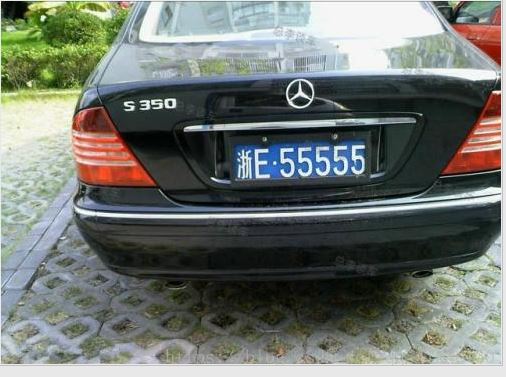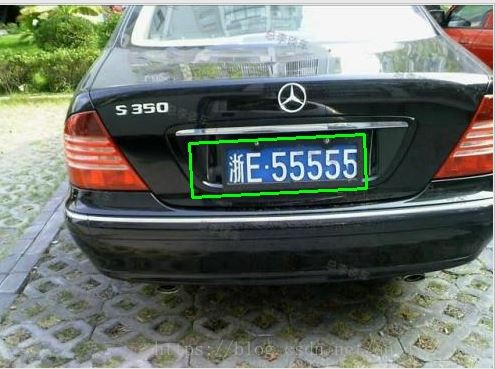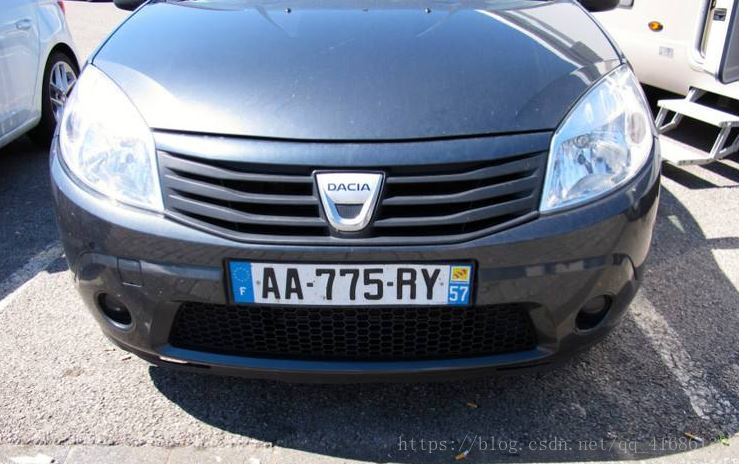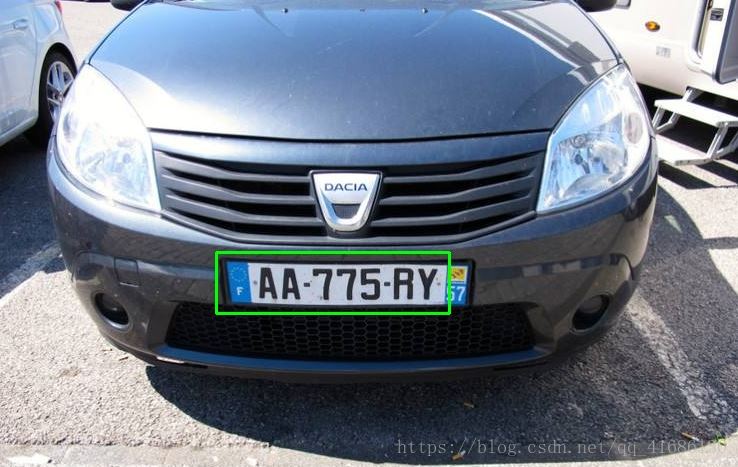- 1京东大佬整理的亿级流量架构核心技术,助力智能时代,成就非凡(1)
- 2如何修改C盘用户文件夹下的用户名_如何更改c盘下的用户文件名
- 3【文献阅读笔记】之基于Deeplabv3+的图像语义分割优化方法_基于改进deeplabv3+网络的马铃薯根系图像分割方法
- 4【Hadoop】DataNode 数据盘进行磁盘DiskBalancer_hdfs增加磁盘进行balance操作
- 5Android学习笔记之——通过Intent来启动不同的Activity_startactivity intent
- 6评价模型-灰色关联分析_灰色关联分析关联度评价
- 7安卓adb 命令查看程序日志_adb获取安卓系统日志
- 8小白从0开始学管理(三) —— 如何打造一个高效的项目团队?(1)
- 9Python Tkinter Grid布局管理器详解_python tk grid
- 103剑客第10天练习题_linux截取ip,并用ip 192,2024Linux运维大厂面试集合
python车牌识别系统开源代码_python实现车牌识别的示例代码
赞
踩
某天回家之时,听到有个朋友说起他正在做一个车牌识别的项目
于是对其定位车牌的位置算法颇有兴趣,今日有空得以研究,事实上车牌识别算是比较成熟的技术了,
这里我只是简单实现。
我的思路为:
对图片进行一些预处理,包括灰度化、高斯平滑、中值滤波、Sobel算子边缘检测等等。
利用OpenCV对预处理后的图像进行轮廓查找,然后根据一些参数判断该轮廓是否为车牌轮廓。
效果如下:
test1:


test2


实现代码如下(对图像预处理(滤波器等)的原理比较简单,这里只是对一些函数进行调包):
import cv2
import numpy as np
# 形态学处理
def Process(img):
# 高斯平滑
gaussian = cv2.GaussianBlur(img, (3, 3), 0, 0, cv2.BORDER_DEFAULT)
# 中值滤波
median = cv2.medianBlur(gaussian, 5)
# Sobel算子
# 梯度方向: x
sobel = cv2.Sobel(median, cv2.CV_8U, 1, 0, ksize=3)
# 二值化
ret, binary = cv2.threshold(sobel, 170, 255, cv2.THRESH_BINARY)
# 核函数
element1 = cv2.getStructuringElement(cv2.MORPH_RECT, (9, 1))
element2 = cv2.getStructuringElement(cv2.MORPH_RECT, (9, 7))
# 膨胀
dilation = cv2.dilate(binary, element2, iterations=1)
# 腐蚀
erosion = cv2.erode(dilation, element1, iterations=1)
# 膨胀
dilation2 = cv2.dilate(erosion, element2, iterations=3)
return dilation2
def GetRegion(img):
regions = []
# 查找轮廓
_, contours, hierarchy = cv2.findContours(img, cv2.RETR_TREE, cv2.CHAIN_APPROX_SIMPLE)
for contour in contours:
area = cv2.contourArea(contour)
if (area < 2000):
continue
eps = 1e-3 * cv2.arcLength(contour, True)
approx = cv2.approxPolyDP(contour, eps, True)
rect = cv2.minAreaRect(contour)
box = cv2.boxPoints(rect)
box = np.int0(box)
height = abs(box[0][1] - box[2][1])
width = abs(box[0][0] - box[2][0])
ratio =float(width) / float(height)
if (ratio < 5 and ratio > 1.8):
regions.append(box)
return regions
def detect(img):
# 灰度化
gray = cv2.cvtColor(img, cv2.COLOR_BGR2GRAY)
prc = Process(gray)
regions = GetRegion(prc)
print('[INFO]:Detect %d license plates' % len(regions))
for box in regions:
cv2.drawContours(img, [box], 0, (0, 255, 0), 2)
cv2.imshow('Result', img)
#保存结果文件名
cv2.imwrite('result2.jpg', img)
cv2.waitKey(0)
cv2.destroyAllWindows()
if __name__ == '__main__':
#输入的参数为图片的路径
img = cv2.imread('test2.jpg')
detect(img)
以上就是本文的全部内容,希望对大家的学习有所帮助,也希望大家多多支持脚本之家。


